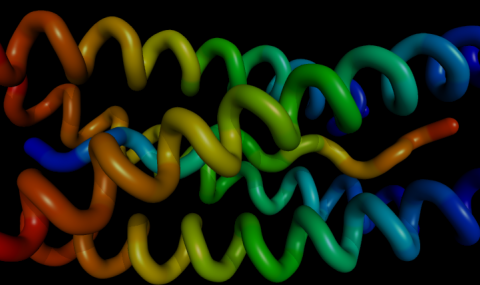
Acetylcholinesterase: Nature's Vacuum Cleaner
Richard E. Gillilan, Daniel Ripoll (Theory Center), Carlos Faerman (Cornell Biotechnology)
Molecular Structure Solved by Joel Sussman, Israel Silman and coworkers at the Weizmann Institute of Science, Israel.
Research Description:
Our research focuses on Acetylcholinesterase (AcChoEase), an enzyme that plays a key role in the human nervous system. In vertebrates, nerve impulses travel from cell to cell by means of chemical messenger. When an electrical impulse reaches the end of one cell, messenger molecules, acetylcholine (AcCho) in this case, are releast to diffuse though the fluid-filled, intercellular, synaptic gap. Upon reaching the destination cell, the AcCho molecules dock into special receptors triggering a new electrical impulse. Much like a vacuum cleaner, the enzyme AcChoEase is constantly sweeping up and hydrolyzing AcCho during this process so that the whole cycle can begin again.
Chemicals that inhibit the action of AcChoEase are being used in the treatment of glaucoma, myasthenia gravis and, experimentally, Alzheimer's disease. In spite of our ability to exploit the enzyme, however, its precise mechanism of operation is still a mystery.
The recent solution of the x-ray structure for AcChoEase places the active catalytic site deep within a gorge-like fold of the protein. Electrostatic computations by Ripoll, Faerman, Axelsen, Silman and Sussman reveal the enzyme to be a single massive dipole. Such a configuration of charge suggests an electrostatic mechanism for directing the positively charged AcCho into the gorge and towards the active site.
 (mpeg loops: 9.87 Mbyte not accessible video
(mpeg loops: 9.87 Mbyte not accessible video , 2.85 Mbyte not accessible video
, 2.85 Mbyte not accessible video , 1.89 Mbyte)not accessible video
, 1.89 Mbyte)not accessible video (Right click and "Save as.." to download
(Right click and "Save as.." to download


